Tourist Trails of India & Nepal
- 14 Nights / 15 Days
- Delhi – Kathmandu – Varanasi – Khajuraho – Orchha – Agra – Bharatpur – Jaipur
Day 1 : Arrive in Delhi - The capital city!
Traditional welcome on arrival at Delhi airport by Travel Pals India executive with fresh marigold flower garlands and then transferred by an exclusive car to your pre-reserved hotel for overnight stay.
Delhi is the capital of the modern India, though it is made up of seven ancient cities, spanning over a period from 11th to 20th centuries.
Day 2 : Delhi
Relaxed breakfast and then introduced with your guide for a tour of the historic city of Delhi. The city where one can experience the influence of the many rulers who ruled this region, a city built and destroyed and re-built over seven times. The guided tour takes you to the monuments that depict the different eras. The tour includes visit to the magnificent Red Fort (exteriors), The Jama Masjid - one of the Asia's largest mosque, cycle rickshaw ride through the narrow lanes of Old Delhi passing through Chandni Chowk, Chawri Bazaar etc, Humanyun's Tomb, Qutab Minar - 73 mt. tall minaret, India Gate war memorial, President's House and drive through Connaught Place.
Optional: Sound and Light show at Red Fort with dinner at an Indian specialty restaurant. Or experience one of the famous bazaars of Delhi, have a stroll in the lush green Lodhi Gardens that has a historic value.
Day 3 : Delhi - Kathmandu (By air)
Today morning, Travel Pals India executive will assist & transfer you to Delhi international airport to connect flight for Kathmandu. On arrival your will be met & transferred to your reserved hotel for check-in.
Day 4 : Kathmandu
A guided sightseeing tour of Kathmandu city - known as Kantipur, the capital of the Kingdom of Nepal. Here you will visit the temple of the Living Goddess who acknowledges the greetings of the devotees from the balcony of her temple residence Kashtamandap - the source of the name Kathmandu and supposed to be made from the timber of a single tree and the Durbar Square are with its array of temples overlooked by the Hanuman Dhoka Palace, the ancient place of the Nepalese Royalty; Swyambhunath Buddhist Stupa is said to be 2000 years old. The Stupa which forms the main structure is composed of a solid hemisphere of brick and earth supporting a lofty conical spire capped by a pinnacle of copper gilt. Painted on the four sided base of the spire are the all seeing eyes of Lord Buddha. This hill is a mosaic of small Chaityas and Pagoda temples & Pashupatinath temple - one of the holiest temples dedicated to Lord Shiva. Situated amidst a lush green natural setting on the bank of the sacred Bagmati River, the temple built in pagoda style has gilted roof and richly carved silver doors.
Day 5 : Kathmandu
Today morning you will have another guided sightseeing tour of Kathmandu & around sites visiting Bhadgaon and Bodhanath - one of the biggest in the world of its kind. It stands with four pairs of eyes in the four cardinal direction keeping watch for righteous behavior and human prosperity. This Buddhist Stupa was built by King Man Deva at the advice of the Goddess Mani Jogini. It is built on an octagonal base inset with prayer wheels. The shrine is ringed by houses of Lamas or Buddhist priest.
Evening free for shopping.
Day 6 : Kathmandu - Varanasi (By air)
Assisted and transferred to Kathmandu airport by a Travel Pals India representative for flight to Varanasi. On arrival you will be met & transferred to hotel for check in.
VARANASI is situated between the rivers Varuna and Assi as they join the Ganges, Varanasi takes its name from its location. It is often referred to as the oldest living city in the world. It is also known as Kashi, the city of light, but the British, in an endeavor to simplify matters, had coined their own name for the place Benaras.
Varanasi is the city of a thousand temples. Its Prominence in Hindu mythology is virtually unrivalled. According to Hindu belief, Varanasi is the cosmic centre of the Universe. The renowned American novelist Mark Twain once wrote "Benaras is older than history, older than tradition, older even than legend and looks twice as old as all of them put together."
Evening visit to the banks (ghats) of river Ganges with your guide to experience the 'Aarti', worship of holy Ganges river with oil-lit lamps accompanied by holy chants and music. A totally mesmerizing moment.
Day 7 : Varanasi
Early morning, we take a boat ride on the river Ganges with our guide to observe the riverside holy activities and a breathless view of the sunrise on river Ganges. We also visit the famous Manikarnika Ghat where Hindus cremate their dead bodies round the clock as it is believed that the life cycle of a Hindu completes with a holy dip in the Ganges at birth and immersing ashes after death.
On way back, walk through the narrow lanes of Kashi the oldest part of Varanasi or also the other name of this ancient Hindu city.
Afternoon, guided excursion to Sarnath where "Lord Buddha" delivered his first sermon after attaining enlightenment, 2,500 years ago. Buddha came here after achieving enlightenment at Bodhgaya (in eastern India). A visit to the famous Banares Hindu University (BHU), It is the largest residential university in Asia, with over 12,000 students living on its campus. BHU was founded in 1916. The campus spread over 1350 acres (5.5 km) was built on land donated by the Kashi Naresh, the hereditary ruler of Banaras. Spend the evening on the Ghats of the Ganges.
Day 8 : Varanasi - Khajuraho (By air)
Breakfast at hotel followed by a transfer to Varanasi airport to board a short flight to Khajuraho.
Khajuraho, anciently "Kharjurav haka", is derived from the Sanskrit words "kharjura" date palm and "vhaka" one who carries. The Khajuraho Group of Monuments has been listed as a UNESCO World Heritage Site, and is considered to be one of the "seven wonders" of India. It is not about religion and worshipping and deities. The temples of Khajuraho are instead famous for the eroticism etched on its walls in the form of sculptures. These temples were built by the rulers of the Chandela dynasty over a span of 200 years, from 950 to 1150. There were originally over 80 Hindu temples, of which only 25 now stand in a reasonable state of preservation, scattered over an area of about 20 square kms (8 sq mi). Today, the temples serve as fine examples of Indian architectural styles that have gained popularity due to their explicit depiction of sexual life during medieval times.
Evening Light & Sound Show. This fascinating light & sound spectacle evokes the life and times of the great Chandela Kings and traces the story of the unique temples from the 10th Century to the present day. The 50 minutes sound and light show is conducted by tourism department in the garden of western group of temples. The show is entertaining and informative about the construction, history and importance of the temples.
Day 9 : Khajuraho - Orchha (190 kms / 5 hrs)
Morning guided visit to the temples of Khajuraho. Eastern Group of temples in Khajuraho quite different from the other temples in Khajuraho is dominated by the Jain temples. Parsvanath temple the largest Jain temple in Khajuraho is located in the eastern group of temples. Adinatha temple and the Ghantai temple is near the Parsvanath temple and is also certainly worth a visit. Brahma Temple dedicated to Vishnu is the only temple built in granite here.
The Khajuraho group of monuments (UNESCO World Heritage Site) was built during the rule of the Rajput Chandela dynasty. The building activity started almost immediately after the rise of their power, throughout their kingdom to be later known as Bundelkhand. Most temples were built during the reigns of the Hindu kings Yashovarman and Dhanga. Yashovarman's legacy is best exhibited by Lakshmana temple. Vishvanatha temple best highlights King Dhanga's reign. The largest and currently most famous surviving temple is Kandariya Mahadeva built in the reign of King Ganda from 1017 1029 CE. The temple inscriptions suggest many of the currently surviving temples were complete between 970 to 1030 CE, with further temples completed during the following decades.
After lunch time, we drive north-west to Orchha town for an overnight break journey.
Day 10 : Orchha - Agra (By train)
Morning guided visit to the gorgeous cenotaphs & the Orchha Fort followed by a short 15 kms transfer to Jhansi to board mid afternoon express train for Agra, city of the seventh wonder of the world - Taj Mahal.
On arrival, met & transferred to your reserved hotel for overnight stay.
Day 11 : Agra
Dawn-view visit of Taj Mahal to witness the wonderous white marble which seems to change colours owing to it's porous nature absorbing light of the sun. A UNESCO World Heritage Site and ones of the seven wonders of the world, was built by Mughal emperor Shah Jahan in the memory of his wife Mumtaz Mahal. Best viewed & enjoyed in the non-chaotic and less crowded time of the day.
The perfectly symmetrical monument standing tall since 1653 AD took 22 years & 20,000 laborers' to complete. The unquestionable beauty of this piece of extravagance can only be treasured by visiting it!
Return to hotel for breakfast.
Noon time we visit the Agra Fort, a UNESCO World Heritage Site, built in red sandstone originally mentioned in 1080 AD and came into limelight when great Mughal emperor Akbar (grandfather of Shah Jahan) made Agra his capital in 1558 and made major changes to the fort’s structure to red sandstone. Later Shah Jahan added white marble palace inside the fort, built in red sandstone by Mughal emperor Shah Jahan.
Further, we visit Itimad-Ud-Daulah (Baby Taj) for a relaxed walk through the lovely landscaped garden and water channel through to the main building on the banks of river Yamuna. It is a fine example of Mughal art precision of intricate inlay work with precious stones on a white marble tomb built in 1628 by Noor Jahan for her father. She was wife of fourth Mughal emperor Jahangir. It is also believer that it acted as a draft to Taj Mahal thus getting it's nickname as Baby Taj.
Evening at leisure or visit the workshop to witness the art of Pietra Dura - A unique art of inlay work of cutting marble and fitting it with highly polished colored stones to create images. The same as perfected in the architecture of Taj Mahal. Note: Taj Mahal is closed on all Friday.
Day 12 : Agra - Fatehpur Sikri - Bharatpur (60 kms / 2 hrs)
Morning driven to Bharatpur with enroute visit of Fatehpur Sikri, the erstwhile capital of the Mughal Empire built by Emperor Akbar in 1569 and abandoned after 15 years due to scarcity of water. See Darbar-e-Aam, Palaces, Panch Mahal and Taansen Seat. A majestic complex of vivid architecture and carvings on red sandstone.
Bharatpur is famous for it's bird sanctuary known as Keoladeo National Park or also referred to as Bharatpur Bird Sanctuary. A UNESCO World Heritage Site.
Overnight in a heritage hotel.
Day 13 : Bharatpur - Jaipur (185 kms / 3 hrs)
Early morning, meet your pre-appointed naturalist for a visit to the Keaoladeo Bird Sanctuary on a cycle rickshaw ride.
The sanctuary was established in 1956. This 29 sq km marshland is one of the finest bird sanctuaries in the world with over 360 species of birds, out of which 117 are the local birds. Now a UNESCO World Heritage site, it used to be a part of the private shooting reserve of the Maharaja of Bharatpur. Among many bird species to be seen here are storks, ducks, Chinese coots, kingfishers, spoonbills, sarus cranes and several birds of prey, including falcon, marsh harrier and eagle. Alone 80 species of ducks can be spotted here.
By noon, driven to Jaipur.
Day 14 : Jaipur
After breakfast an excursion to the grand Amer Fort. Ascend the fort on a gaily-decorated elephant back. Experience the kingly palace buildings and a view of the ancient city of Amer. You may also choose to walk uphill or with your driver in the car.
Visit the City Palace Museum complex to witness the grandeur of royal lifestyle by visiting the display galleries of textiles & fabrics, paintings & art work, arms & ammunition gallery.
Jantar Mantar - the observatory having instruments from 1728 AD for measuring celestial planet & star positions. Drive past the Palace of Winds (Hawa Mahal).
Evening enjoy walk through the colorful bazaars of the city. One can also experience the famous block printing at the nearby workshop. Jaipur is also famous for its Gems & Jewellery. One can shop endlessly as this place is a shoppers paradise on this tour.
Day 15 : Jaipur - Delhi
Day at leisure un till drive back to Delhi international airport to board flight for onward destination with sweet memories of your India trip. Alternatively, you may like to fly from Jaipur airport to Delhi and further connection to your onward international flight.
You may like to extend your stay in Delhi. Alternatively, please ask us for our various extension programmes to choose from.
Maps
Cost Details
Hotels
3 star Hotels
Lorem Ipsum has been the industry’s standard dummy text ever since the 1500s, when an unknown printer took a galley of type and scrambled it to make a type specimen book. It has survived not only five centuries.
4 star Hotels
Lorem Ipsum has been the industry’s standard dummy text ever since the 1500s, when an unknown printer took a galley of type and scrambled it to make a type specimen book. It has survived not only five centuries.
Luxury Hotels
Lorem Ipsum has been the industry’s standard dummy text ever since the 1500s, when an unknown printer took a galley of type and scrambled it to make a type specimen book. It has survived not only five centuries.
Cars
Cedan
Lorem Ipsum has been the industry’s standard dummy text ever since the 1500s, when an unknown printer took a galley of type and scrambled it to make a type specimen book. It has survived not only five centuries.
SUVs
Lorem Ipsum has been the industry’s standard dummy text ever since the 1500s, when an unknown printer took a galley of type and scrambled it to make a type specimen book. It has survived not only five centuries.
Luxury
Lorem Ipsum has been the industry’s standard dummy text ever since the 1500s, when an unknown printer took a galley of type and scrambled it to make a type specimen book. It has survived not only five centuries.
Guide Details
Lorem Ipsum has been the industry’s standard dummy text ever since the 1500s, when an unknown printer took a galley of type and scrambled it to make a type specimen book. It has survived not only five centuries.
COST
₹50.00

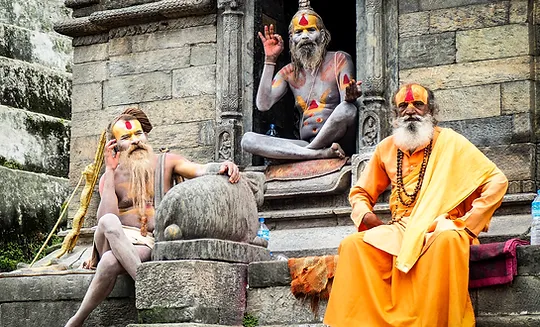
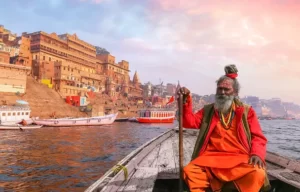
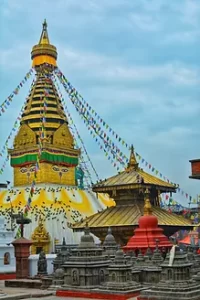
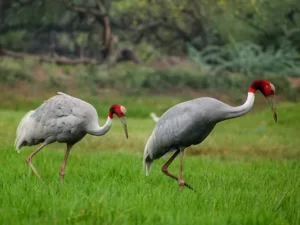
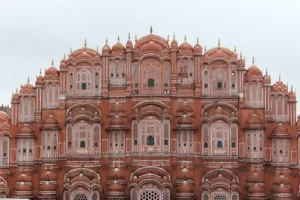
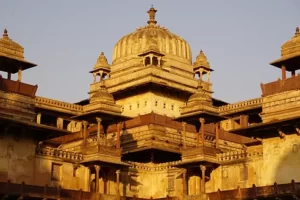




Reviews
There are no reviews yet.